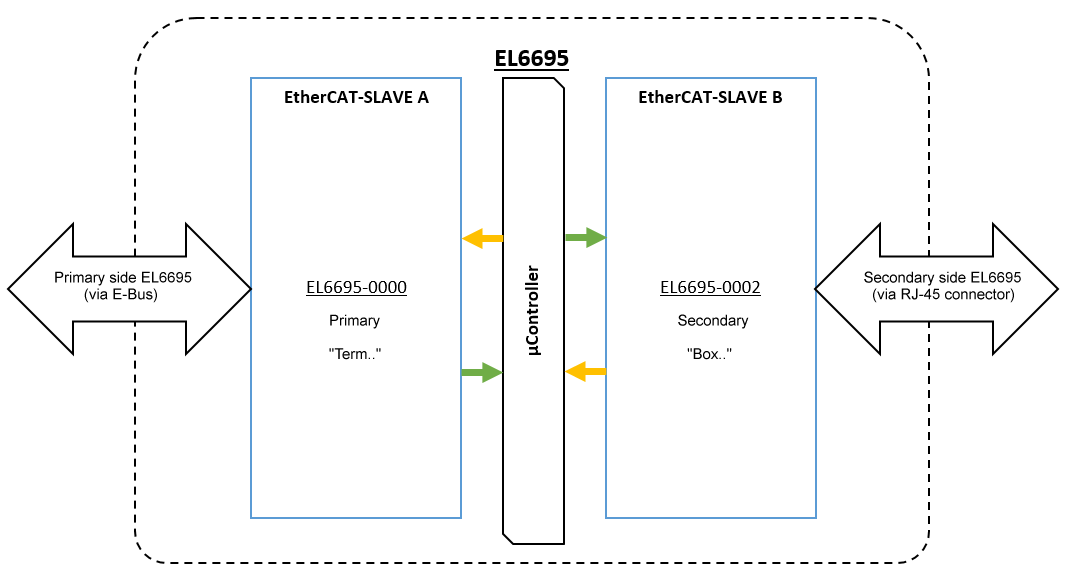Basic function principles
The EL6695 EtherCAT bridge terminal enables synchronous real-time data exchange between EtherCAT strands and two, possibly different masters. Asynchronous communication via various acyclic protocols such as AoE, FoE, EoE, VoE etc. is also supported.
The EL6695 offers three basic functions:
- Synchronous PDO data exchange
- Asynchronous data exchange
- Distributed clock synchronization
During synchronous data exchange of synchronous process data, the EtherCAT master copies predefined process data from one bridge side to the other. Status variables on both sides provide information about missing data and the status of the other side.
Synchronization of distributed clocks is possible in both directions. It is important to define which side contains the higher-level reference clock, the so-called grandmaster clock. The EL6695 then transfers time values to the subordinate EtherCAT master on the other side, so that it can adjust its EtherCAT system time, if it supports this feature.
The EL6695 differs from the EL6692 (which will continue to be available) in terms of extended functions such as flexible CoE configuration, a device emulation option and in particular a significant increase in data throughput.
A user-friendly configuration interface is available in the TwinCAT System Manager for TwinCAT 3 (in preparation for TwinCAT 2). This extension is not absolutely necessary for general operation, although it is required for EmulationMode.
The internal energy supply for the EL6695 is provided redundantly from the primary side (E-bus) or the secondary side (RJ45). The EL6695 is fully functional on both EtherCAT sides, as soon as power is supplied on at least one of the two sides. The power supply for the secondary side (RJ45) is via an external connection, the primary side is supplied via the E-bus. If both supplies are active, the 24 V supply is used preferentially.
The EL6695 effectively consists of two complete EtherCAT slaves in one housing: the EL6695-0000 on the primary side (E-bus), and the EL6695-0002 on the secondary side with network cable connection (RJ45).

In terms of functionality the two bridge sides are equivalent, i.e. all functions can be operated or used from both sides. Nevertheless, the terms “primary” for the E-bus side and “secondary” for the RJ45 side continue to be used for localization reasons, even though for the EL6695 primary/secondary do not relate to any weighting or ranking.